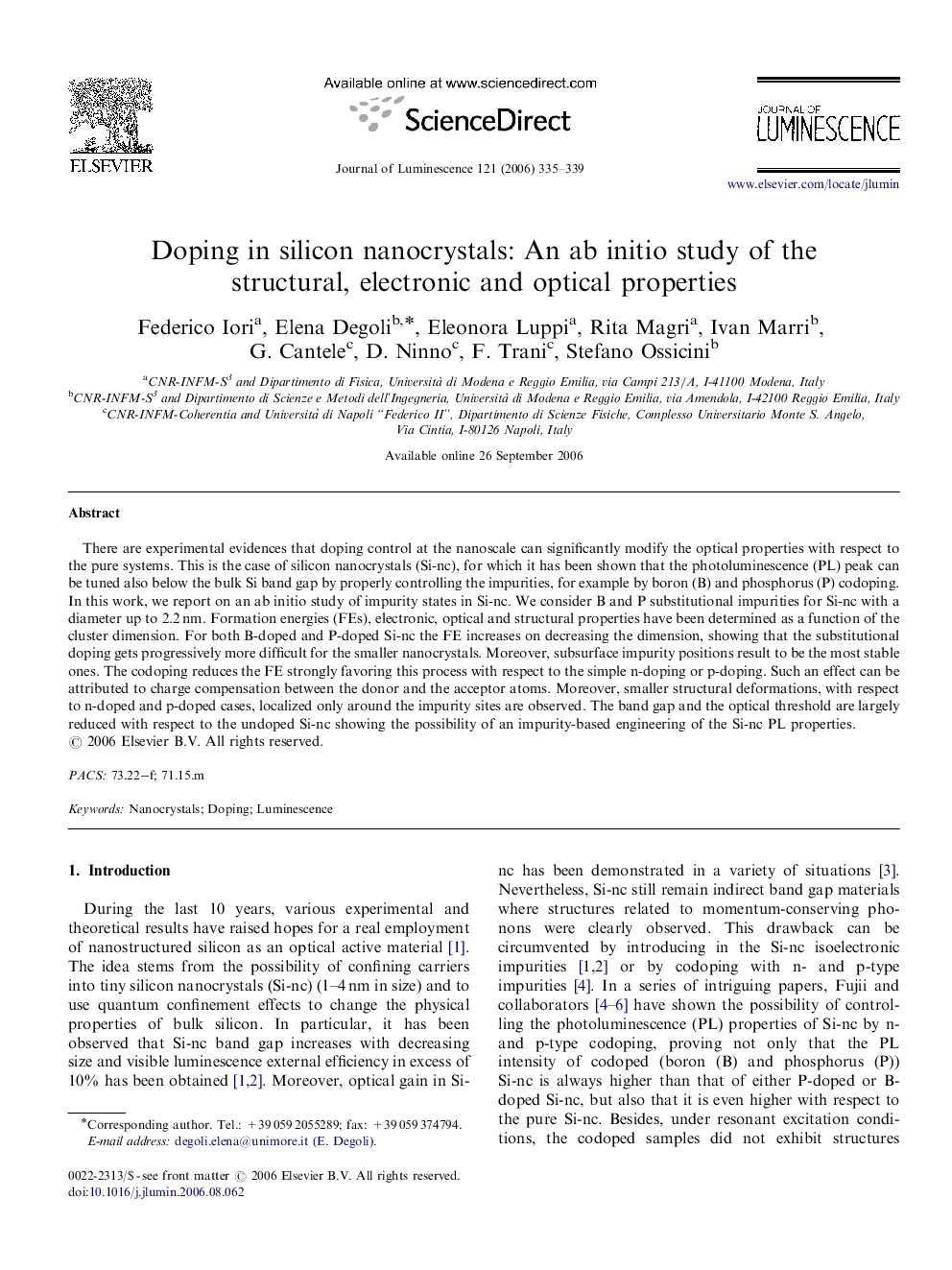| Article ID | Journal | Published Year | Pages | File Type |
|---|---|---|---|---|
| 5404031 | Journal of Luminescence | 2006 | 5 Pages |
Abstract
There are experimental evidences that doping control at the nanoscale can significantly modify the optical properties with respect to the pure systems. This is the case of silicon nanocrystals (Si-nc), for which it has been shown that the photoluminescence (PL) peak can be tuned also below the bulk Si band gap by properly controlling the impurities, for example by boron (B) and phosphorus (P) codoping. In this work, we report on an ab initio study of impurity states in Si-nc. We consider B and P substitutional impurities for Si-nc with a diameter up to 2.2Â nm. Formation energies (FEs), electronic, optical and structural properties have been determined as a function of the cluster dimension. For both B-doped and P-doped Si-nc the FE increases on decreasing the dimension, showing that the substitutional doping gets progressively more difficult for the smaller nanocrystals. Moreover, subsurface impurity positions result to be the most stable ones. The codoping reduces the FE strongly favoring this process with respect to the simple n-doping or p-doping. Such an effect can be attributed to charge compensation between the donor and the acceptor atoms. Moreover, smaller structural deformations, with respect to n-doped and p-doped cases, localized only around the impurity sites are observed. The band gap and the optical threshold are largely reduced with respect to the undoped Si-nc showing the possibility of an impurity-based engineering of the Si-nc PL properties.
Related Topics
Physical Sciences and Engineering
Chemistry
Physical and Theoretical Chemistry
Authors
Federico Iori, Elena Degoli, Eleonora Luppi, Rita Magri, Ivan Marri, G. Cantele, D. Ninno, F. Trani, Stefano Ossicini,
